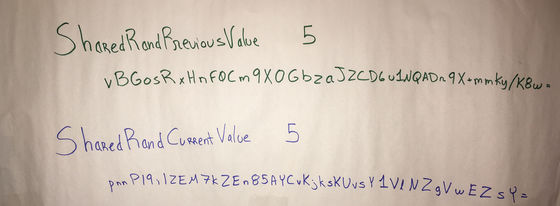Tor reveals a development plan for a new service enabling next generation anonymization

ByNorlando Pobre
In March 2013, a wiretapping system that Edward Snowden operated US National Security Agency secretlyPRISMSince accusing the existence of anonymous communication systems that can not see the contents of communication even in eavesdropping systems and the like became attracting attention. As representative of such anonymous communication system "Tor(Toa) "is proceeding with the development of a service that is responsible for the next generation anonymization system.
Mission: Montreal! (Building the Next Generation of Onion Services) | The Tor Blog
https://blog.torproject.org/blog/mission-montreal-building-next-generation-onion-services

In 1995 encrypted communication methodOnion routingAfter that, a system "Tor" that enables anonymous communication based on this concept was developed. Tor keeps the anonymity of communication by encrypting all but the exit of the access route via multiple relay points on the communication route.
A more detailed explanation of Tor can be read in the following article.
Commentary on how anonymous communication "Tor" works How to understand - GIGAZINE

A community that develops the Tor system hosted events for developers in Montreal in May 2016 and worked on the development of new services. Tor calls this "next generation onion service." This developer event was aimed at the development of new services at the second meeting following Arlington Accords in July 2015. It is a new service development project that began with the 2015 event, but the project was very huge and complicated, so the necessity of actually proceeding development in the same space necessitated the second event being taken over He said that.
The kind of scribbling below is a list that summarizes what developers did in the event.

The first thing that was done was the design of a distributed random number generation system to be placed on the Tor network. A distributed random number generation system is a system in which a large number of computers collaborate to create a single random number, and if this is realized, no one can predict a random number generated. By incorporating these systems on next-generation services, the unpredictability of the system will increase and the security will be strengthened. According to Tor developers, such a distributed random number generation system has never been seen on the Internet before.
The following picture is a drawing describing the concept of distributed random number generation system made by Tor developer

Currently, the developer of the service tests this distributed random number generation system on the virtual Tor network constructed in the computer. However, in fact, the developer says that the system should be tested in the same environment as the actual Tor network, not in a single computer.
And this demonstration test is one of the things that took place at the Montreal event. The developers gathered and built the Tor network, it seems that the distributed random number generation system was tested. And, as a result of the tests, the developers were able to confirm possible network failures and recoverable from the case of using the distributed random number generation system on the actual Tor network.
The following picture shows the numerical value generated first in the distributed random number generation system. "5" means that five Tor nodes contributed to generating a random number, and the actually generated random number is a list of alphanumeric characters listed under "5" It is seen.

Besides, in order to improve the user experience in the event, it seems that the current service has onion address of 55 letters, for the next generation service it is shortened, and discussion for improving the service has been exchanged. However, he says that there is no plan to abolish the current service at once.
Related Posts:
in Software, Posted by logu_ii






